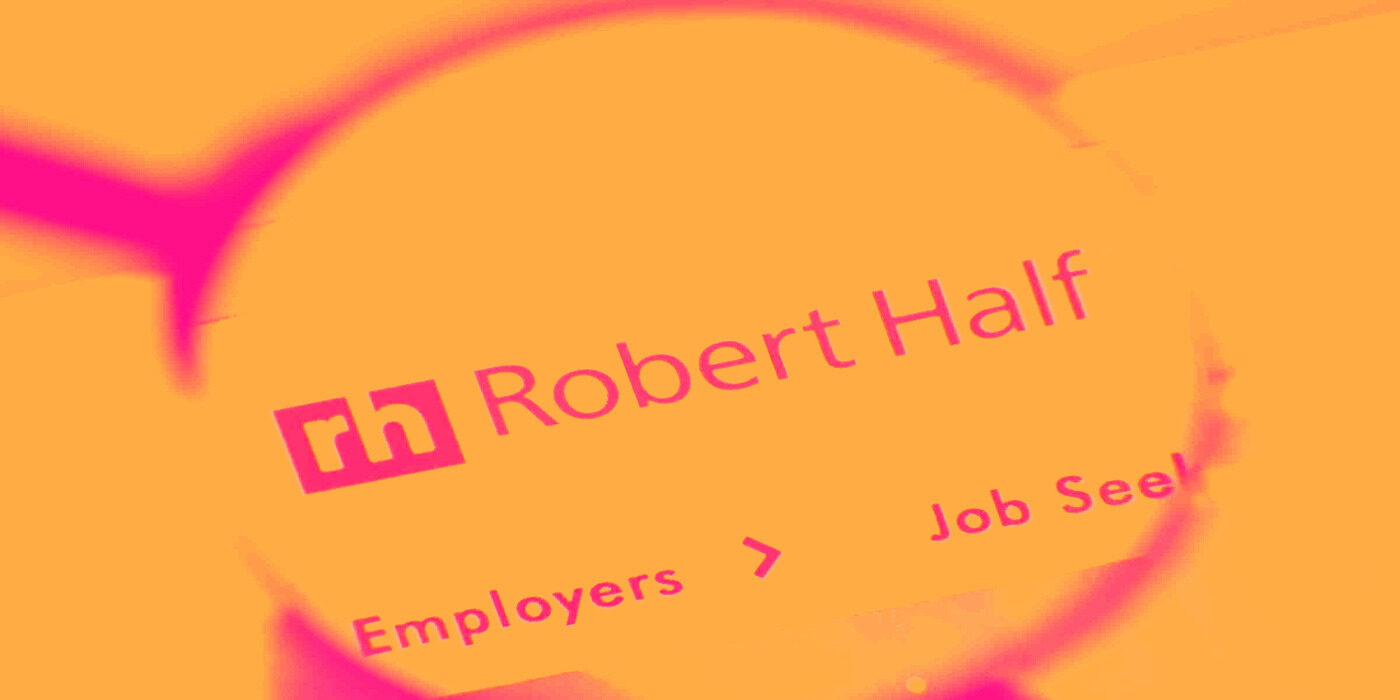
Robert Half’s first quarter was marked by an 8.4% year-over-year revenue decline and adjusted profits that missed Wall Street forecasts, leading to a negative market reaction. Management attributed the underperformance to elevated client and job seeker caution amid economic policy uncertainties, which resulted in elongated hiring cycles and subdued demand for both staffing and consulting services. CEO Keith Waddell described the environment as one of "moderated business confidence" and noted that "client and job seeker caution continues to elongate decision cycles and subdue hiring activity and new project starts."
Is now the time to buy RHI? Find out in our full research report (it’s free).
Robert Half (RHI) Q1 CY2025 Highlights:
- Revenue: $1.35 billion vs analyst estimates of $1.41 billion (8.4% year-on-year decline, 4.3% miss)
- Adjusted EPS: $0.17 vs analyst expectations of $0.36 (53% miss)
- Adjusted EBITDA: $36.45 million vs analyst estimates of $65.39 million (2.7% margin, 44.3% miss)
- Operating Margin: 2.9%, in line with the same quarter last year
- Market Capitalization: $4.30 billion
While we enjoy listening to the management's commentary, our favorite part of earnings calls are the analyst questions. Those are unscripted and can often highlight topics that management teams would rather avoid or topics where the answer is complicated. Here is what has caught our attention.
Our Top 5 Analyst Questions Robert Half’s Q1 Earnings Call
- Mark Marcon (Baird) asked about the discretionary versus non-discretionary nature of Protiviti’s business. CEO Keith Waddell clarified that risk and compliance, and internal audit work in financial services, are generally non-discretionary, while technology consulting and business process improvement vary in discretion.
- Andrew Steinerman (JPMorgan) pressed for specifics on administrative cost cuts and whether technology was replacing eliminated roles. Waddell explained that most reductions were in corporate services and field management, with minimal impact on support for revenue-generating positions, citing tech improvements as an enabler of efficiency.
- Manav Patnaik (Barclays) questioned the timing of cost actions and whether client behavior had shifted. Waddell acknowledged that renewed economic uncertainty and persistent negative leverage on overhead prompted the decision to cut costs after observing ongoing client caution.
- George Tong (Goldman Sachs) inquired about the impact of AI-driven job displacement versus cyclical factors. Waddell emphasized that current revenue declines are primarily due to cyclical client caution, with little evidence that AI adoption is materially affecting demand for Robert Half’s core services.
- Trevor Romeo (William Blair) asked about the resilience of high-skilled roles and the mix within Talent Solutions. Waddell responded that the company continues to move up the skill curve, particularly in technology, noting higher bill rates and a stable contribution from full-time engagement professionals (FTAPs).
Catalysts in Upcoming Quarters
In the coming quarters, the StockStory team will watch (1) the pace and sustainability of cost savings from recent administrative reductions, (2) signs of improved client confidence and hiring urgency reflected in weekly revenue trends, and (3) the impact of AI and digital tools on recruiter productivity and client acquisition. Shifts in project pipelines, particularly within Protiviti, and any stabilization or rebound in permanent placement activity will also be key indicators of recovery potential.
Robert Half currently trades at $42.85, down from $46.47 just before the earnings. At this price, is it a buy or sell? Find out in our full research report (it’s free).
High-Quality Stocks for All Market Conditions
The market surged in 2024 and reached record highs after Donald Trump’s presidential victory in November, but questions about new economic policies are adding much uncertainty for 2025.
While the crowd speculates what might happen next, we’re homing in on the companies that can succeed regardless of the political or macroeconomic environment. Put yourself in the driver’s seat and build a durable portfolio by checking out our Top 5 Growth Stocks for this month. This is a curated list of our High Quality stocks that have generated a market-beating return of 183% over the last five years (as of March 31st 2025).
Stocks that made our list in 2020 include now familiar names such as Nvidia (+1,545% between March 2020 and March 2025) as well as under-the-radar businesses like the once-micro-cap company Kadant (+351% five-year return). Find your next big winner with StockStory today.





